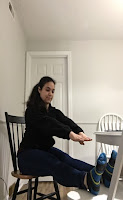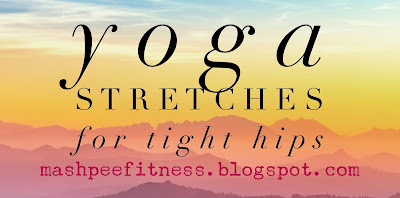Remember the days when jumping, skipping and leaping on and off and over things was fun? Well, it still can be! Have you ever seen people at the gym or in a workout video hopping or jumping around? Often onto or over equipment? Did you ever wonder why so many people like to jump around for a workout? Well, they may have a secret that you haven’t been let in on, until now. Plyometric Training.
Side-Step Hops
A great starter to warm-up your hips and leg joints, Side-Step Hops is a
great beginner move to get you more acquainted with Plyometric Training. All you need is a willingness to explore and
learn, as well as about 4-feet sq. of space that you can move freely in.
- Start by standing to one side of your space with feet hip-width apart. Sit your hips back and down slightly, putting a small bend into your knees.
- Next, shift your weight onto your outside leg; the leg furthest away from the other side of your space. Lift your inside foot off of the floor so that you are now standing on your outside leg solely.
- Push off of your standing leg so that you move across your space and land softly on the opposite leg. Secure your landing, bending softly into the ‘new’ outside leg. Push off and return to where you started.
- Try hopping across your space, side-to-side, for 60-seconds. Take a short break then do it again.
Skaters
Did you ever
want to be an Olympic speed skater? Me
neither. However, when I perform this
Plyometric exercise I often change my mind.
Similar to the Side-Step Hops, which makes this a great transition,
Skaters will challenge your hip, knee and ankle stability a little more, as
well as stretch and power your quadriceps and glutes because you will bend your
torso forward. Let’s do this!
- First, stand to one side of your space with bent knees. Lift your inside foot up from the floor. You will push off your standing leg and hop to the other side of your space, landing softly. Lean your torso forward as if you are actually skating down the ice with purpose.
- Keeping your torso down as you hop across your space, swing the leg that you pushed off of behind you, reaching across the backside of your body. Think of an over-exaggerated Curtsy. You may want to touch your toe down on the floor behind you as you learn this move to ensure steady balance.
- Bend you standing knee down and head on back to where you started. Keep it going for 60-seconds. Take a breather from all the skating and then get back on the ice for another minute.
- Your arms may swing freely as you move from side to side.
Hopscotch
That’s
right…Hopscotch! Hopscotch is a
perfect beginner/intermediate Plyometric exercise because it involves
hopping. There are several ways to
increase the level of difficulty as you become more comfortable (i.e. get your
Hopscotch rhythm back).
- In your 4 sq. ft. of space, stand at the back, facing forward. Place your feet hip width apart. I encourage you to start slow as you learn/relearn basic Hopscotch moves.
- Begin moving by bending your knees and hopping forward slightly, landing on your left foot with a bent knee (keeping your right foot from touching the floor). Be sure hops are only about 6”-12” in length. You can choose how high you are comfortable hopping. *Remember, start small and grow into bigger moves.
- Hop forward from your left foot and land on your right foot with bent knee. Be sure to keep your left foot lifted.
- Hop forward from your right foot, this time landing on both feet, keeping knees bent.
- Repeat once more moving forward so that you move forward the entire time without stopping.
- Lastly, facing forward still, try this going backwards. If you are not comfortable with moving backwards then turn around and go forward, returning to your starting position.
- Hopscotch for 60-seconds. Smile because of the memories for 30-seconds then go again. Over time, hop a little higher (not longer) or quicker, begin sure to land softly with bend knees.
Squat Jumps
Though you may think that Squat Jumps sounds fairly
simple, don’t be fulled. However, this
is a simple move, requiring less coordination than the others. Squat Jumps will increase cardio and strength
in your legs and hips like no other, especially as you grow into squatting down
low, a more advance move (don’t feel like you must squat low to gain the
benefits of this exercise, you don’t).
- To begin, stand in your space with feet hip-width apart. Make sure your toes face forward, or only slightly outward.
- Starting bending your knees as you sit your hips back and down. For beginners, I recommend only squatting down 1/4th of the way down until you build up enough flexibility to squat further down without sacrificing your form. As you squat down, keep your shoulder back and chest lifted. This improves your overall squat form as well as helping you maintain your balance for when you jump up.
- Press down into your feet evenly to propel your body upward with force. At first, try just coming up onto your toes instead of jumping. This will help you sense your body’s response to leaping upward and coming back down. Over time, begin lifting up completely, bringing your feet only an inch or a few inches off the ground.
- Land softly, with bent knees and lower back down into your squat. Repeat for 60-seconds going at a comfortable pace. You may quicken your pace and the height of your jumps as you gain more familiarity and build strength, all the while maintaining good form. Try 2 rounds of Squat Jumps, focusing on your form.
- For your arms, as you squat down, reach your arms out in front of you. When you jump upward, pull your arms into your body and a bit behind you to open your chest.
Blog post by Jami Woods.







































